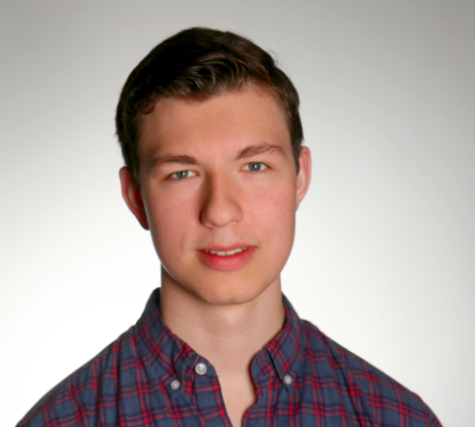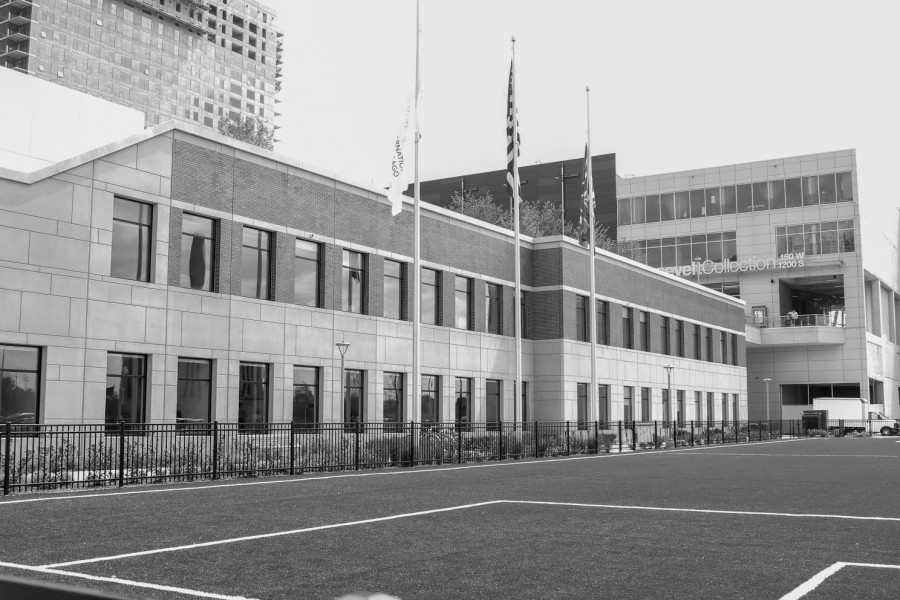New Kids on the Block
As Parker Expands, So Will Many of Chicago’s Other Independent Schools
When Julie N. moved from Britain to her husband’s hometown of Chicago, she never planned to send her kids to private school. Her first son attended the neighborhood school, Lincoln Elementary, which she considered relatively good, even though there were 30-34 kids in each class.
But when it came time for Julie to enroll her second son, Matt (not his real name), it looked like the family would be cut out of the catchment area for Lincoln because of overcrowding and Matt would be forced into a lower-performing school. So she decided to apply to private schools.
Julie’s first choice was Immaculate Conception, a Catholic school, but Matt didn’t get in, so he went to the British School, her second choice. It cost $25,000 a year, significantly more than most Catholic schools, but she felt it was worth it.
“The only place we got in was the British School,” Julie said. “And after seeing the British School, we were over the moon to get a place — aside from it was going to cost a fortune.”
Six months after Matt started classes, Julie “could tell a big difference in the level of education, basically due to the fact that they had more resources at the British School.”
Now Julie lives in San Mateo, California. She moved there, rather than San Francisco, where she really wanted to live, because of its excellent public high schools.
But for those who can’t move to California, this fall the British School of Chicago opens a campus in the South Loop.
Many other independent (meaning non-parochial private) schools — including Parker — have also opened in or expanded in Chicago over the past five years or so, hoping to attract the Matts of the city.
All those new students show up in the numbers. The Independent Schools Association of the Central States (ISACS) reported 20 percent enrollment growth in affiliated schools in the City of Chicago between the 2010-2011 and 2014-2015 school years.
Among the newcomers is GEMS World Academy – Chicago, a school pitching tent in Lakeshore East whose tuition — $32,000 for kindergarten — made headlines in 2013. Its Director of Communications, Jeff Puma, said “We’re still enrolling students right now for the 2015-2016 school year,” he said, “so I know there’s still capacity out there.”
Other growing schools include the German International School, which plans to continue adding a grade a year, and Lycee Francais de Chicago, which has built a second campus in Ravenswood to up enrollment from 690 to 800. And the Bennett Day School (K-8), which opened in fall of 2014 and will open a second campus fall 2016, was co-founded by a former fourth-grade teacher at Parker, Kate Cicchelli.
Numbers from ISACS — and anecdotal evidence — suggest that Chicago has begun to defy the national trend, which is one of slow shrinkage, according to the National Center for Education Statistics.
ISACS enrollment numbers could overstate enrollment increases. Only the more successful and prestigious schools meet ISACS’s standards for accreditation, and the more successful and prestigious schools are, the more likely they are to fill expanded classes.
But ISACS’s data includes many non-member affiliated schools, most of which do not meet the accreditation criteria. And local school markets often look quite different from the national scene.
Vice president of media of the National Association of Independent School Myra McGovern offered an explanation of the different fates of independent schools in different areas.
“We did a regression analysis to see what the similarities were among the schools that were declining or were growing,” McGovern said. “The biggest predictive factor is the demographics in the area. And many cities have continued to grow in population, even through the recession.”
There’s nothing odd about schools in different places faring very differently.
Cameron Smith, co-founder and Chief Executive Officer of Bennett Day School, said, “School and school choice is a very local, even what I would call hyper-local, decision and need.”
Demographics are one of the two main factors in Parker’s decision to expand, according to Principal Dan Frank.
“There are two elements: one is internal and one is external,” Frank said. “The external is the easy one, which is demographic studies have indicated that there are students in the City of Chicago who would be interested in a Parker education. But the real driver, it seems to me, is mission-based: if the needs of society determine the work of the school, does society need more, or fewer, people who can help address those needs of society because they had a Parker education?”
Though ISACS can’t quantify mission, it has made demographic findings similar to those of Parker. ISACS’s studies have shown that, as well as having a lack of independent schools right now, the city has historically had fewer independent schools than others of similar size, Crain’s Chicago Business noted in a 2013 article.
But the low acceptance rates at current independent schools suggest that, for whatever reason, demand is no longer unusually small. In 2013 Randall Dunn, Head of the Latin School of Chicago, told Crain’s that the school had received an average of 244 applications for the 40-45 slots available in each ninth-grade class over the past five years.
Frank offered his take on what the growth of independent schools in Chicago could mean for Parker. He believes that it will bring many challenges — and push Parker to honor its philosophical commitment to change.
“We can never take for granted that everything the way it is right now is the way it should be,” Frank said. “The competitive environment helps support the notion that we should always be striving to progress.”

Sanford Miller is a senior and is currently an Editor-in-Chief of the "The Parker Weekly." He joined the staff sophmore year, working as a staff writer and then as Opinion Editor before assuming his current position. He looks forward to watching "The Weekly's" website grow and develop this year. When he is not sending emails related to "Weekly," he like to read, listen to music, and binge-watch Netflix.







